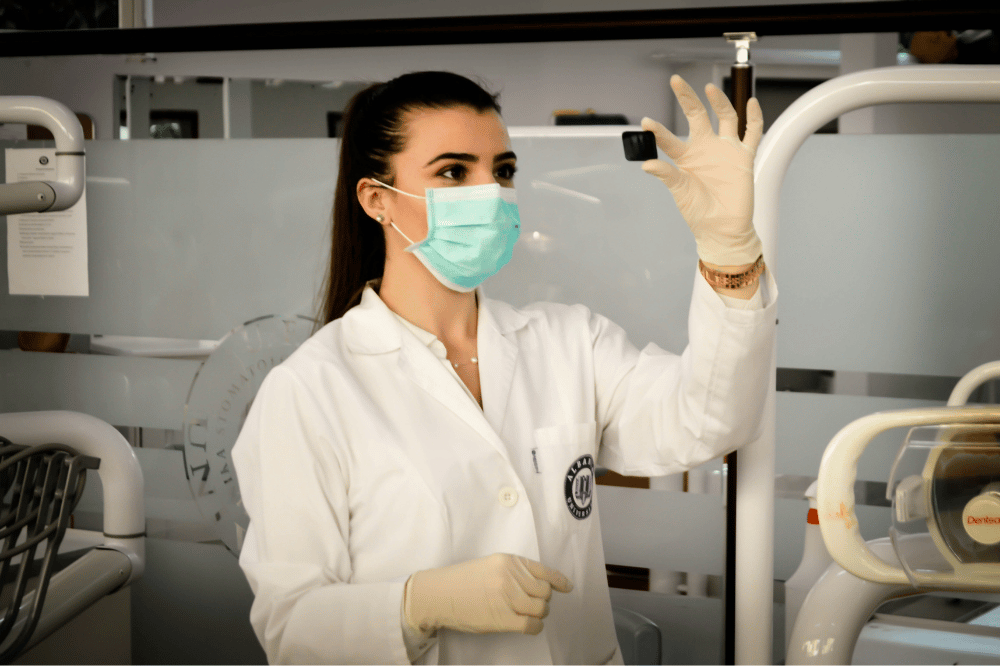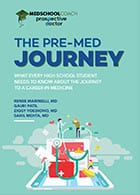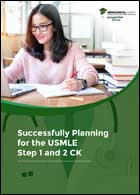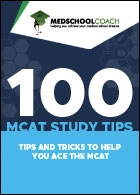
Table of Contents
The AMCAS (American Medical College Application Service®) is the AAMC’s application system used to apply to most U.S. allopathic medical schools. The “Work and Activities” section of the AMCAS (often just called “AMCAS Activities”) is part of your med school application, where you’ll define the activities you’ve participated in outside of academics to prepare for a future medical career.
The Work & Activities section can include up to 15 job-related or extracurricular experiences that show you’re a desirable candidate for medical school. You’ll be able to define 3 “most meaningful experiences” that, to you, are the most representative of your extracurricular activities.
Not sure what to include or how to discuss it? We’ll walk you through the entire process in this in-depth AMCAS Work & Activities guide.
Our former admissions committee members are ready to help you with AMCAS. Stand out among med school applicants – enroll in 1-on-1 admissions advising today!
Quick Start Guide
The Work & Activities section of the AMCAS is where you’ll enter extracurricular activities (including job experience) relevant to your future career as a medical student and physician. Here are the details you need to know before getting started:
- Number of experiences: You may enter up to 15 experiences with up to four occurrences each. Occurrences refer to similar events that fit into a single experience (such as multiple honors from the same organization or research projects on a specific area of study). Three entries can be marked as your “most meaningful experiences.”
- Character limits: You’ll have 700 characters per experience (roughly 5-12 sentences). For your three “most meaningful experiences,” you’ll have an additional 1,325 characters (roughly 9-22 sentences) to explain why those experiences are the most meaningful to you.
- How experiences show up on your application: Your Work & Activities are arranged in chronological order by default; however, AdComs may reorder them by category or other factors depending on their preferences. This section is shown before your personal statement.
- Edits and additions: Once your AMCAS application is submitted, you will not be able to add more activities or edit those already included. That being said, you may add and edit entries while working on your application before submitting it.
- Formatting: No rich formatting will be included in the final submission. If you plan to copy and paste your experience descriptions into your application, use a formatting-free, text-only word-processing software like TextEdit on Mac or Notepad on PC. Avoid bulleted lists or other text formatting, as these will not translate to the application reviewed by admissions committees.
Just a note: After a significant overhaul to the Work & Activities categories in 2024, the AAMC has made no changes to this section of the AMCAS for 2025.
Read Next: 10 Questions Pre-Med Students Need to Ask When Shadowing a Doctor
Work & Activities Categories
There are 19 AMCAS Work & Activities section categories (called Experience Types). You can only use one category per experience, so choose wisely.
- Artistic Endeavors
- Community Service/Volunteer – Medical/Clinical
- Community Service/Volunteer – Not Medical/Clinical
- Conferences Attended
- Extracurricular Activities
- Hobbies
- Honors/Awards/Recognitions
- Intercollegiate Athletics
- Leadership – Not Listed Elsewhere
- Military Service
- Other
- Paid Employment – Medical/Clinical
- Paid Employment – Not Medical/Clinical
- Physician Shadowing/Clinical Observation
- Presentations/Posters
- Publications
- Research/Lab
- Social Justice/Advocacy
- Teaching/Tutoring/Teaching Assistant
“Social Justice/Advocacy” was added to the AMCAS Experience Types in the 2024 application cycle because, according to the AAMC, “the medical community recognizes that social justice/advocacy is a core value for those working and learning in medicine and medical education.”
Social Justice/Advocacy experiences may include organizing rallies, fundraisers, community activism, and meetings with political leaders or working/volunteering with a relevant non-profit.
Read Next: Applying to Med School as a Non-Traditional Applicant
Ideal Balance of Work and Activities
There’s no ‘perfect’ breakdown of experiences for the AMCAS Work and Activities section. Still, you should aim for your efforts to reflect your potential as a future medical student and physician. Don’t waste time with irrelevant experiences just to fill in as many as possible.
What to Include
Based on what admissions committees look for in applicants, we find that the mix below works well to show a wide range of desirable qualities.
- List at least 3 experiences each (total of 6 entries out of 15) in the following 2 categories:
- Community Service or Social Justice/Advocacy
- Clinic work of any kind (Paid Employment or Volunteer)
With these categories, emphasize long-term commitments rather than short-term experiences. Work experience at an NGO for 2 years is more vital than tutoring for a month.
- List at least 2 experiences each (total of 4 entries out of 15 in the following 2 categories):
- Leadership of any kind
- Research/Lab
Again, prioritize depth, not breadth. Captaining the crew team should be given more importance than volunteering at a soup kitchen once.
- Complete your 15 total entries with 1 experience in 5 of the following categories:
- Honors/Awards/Recognitions
- Paid Employment (if you haven’t used this already)
- Physician Shadowing/Clinical Observation (if you haven’t used this already)
- Military Service (if applicable)
- Hobbies, Extracurricular Activities, Intercollegiate Athletics, or Artistic Endeavors (but not more than two of these)
You may combine up to 4 things under 1 activity, as long as they are related. For example, you can put 4 honors and awards under a single Honors/Awards/Recognitions experience.
These recommendations aren’t set in stone – it’s absolutely okay if you have more or fewer experiences in one category or another. (For instance, if you have two great Paid Employment experiences but only one strong Research/Lab experience, that probably isn’t going to affect your application too much.)
However, we do recommend that you try to include a balance of activities that span across the categories mentioned above.
Be Program-Specific
While the suggestions above are good guidelines to follow, it’s important to note that everyone’s list will look a little different. You’ll want to focus on listing work and activities that align with your specific medical program of choice.
For instance, if you’re pursuing programs where research experience is vital, such as Ivy League medical schools or an MD/PhD program, it’s a good idea to list more research activities examples. If you’re pursuing programs that are more focused on primary care, perhaps add more community service or clinical items.
Read Next: A Sample “Why MD/PhD” Essay (Plus, How to Make Yours Stand Out)
What Not to Include
While there are elements you want to make sure you include in a balanced Work & Activities section, there are also certain things you should avoid including:
- Anything you got course credit for (this will be on your transcript)
- Primary or secondary school achievements
- Blood or hair donations
- Shadowing or observing a family member
- Religious attendance (unless these experiences have a service, clinical, leadership, or shadowing component)
- Unethical or immoral practices
- Related activities which can be grouped together
- Anything you can’t expound upon in a medical school interview
Do not repeat yourself across multiple experiences. Additionally, don’t repeat phrases and wording that will directly appear in your personal statement. However, you may discuss different aspects of the same experience in your Work & Activities section and your personal statement.
How to Write Activity Descriptions
All 15 work and activity entries require an “Experience Description.” The majority of your word count should be used to provide the facts of what you did, closing with 1-2 sentences reflecting on that experience. If you’re combining more than one similar experience in this entry, describe all of them.
Your “most meaningful activities” allow additional writing space for you to share more of the abstract ways an experience impacted or shaped you. Be careful not to get too flowery or emotional in your experience descriptions. Your personal statement is the best place on your AMCAS to convey emotion and introspection.
Here are some tips to keep in mind as you write:
- Cover all the facts. Try to include all relevant factual details about your experience, including the who, what, when, where, how, and why. If you worked as a research assistant, describe in concise detail what your research project was observing and the school or organization name under which they operated.
- Include your contribution. Modestly but comprehensively describe your contributions to this experience. If you worked as a tutor at university, talk about how exactly you helped students achieve academic success.
- Brainstorm the best version of the facts. Be truthful. Also, be mindful of what admissions committees will read in the context of reviewing your primary application. When describing experiences, brainstorm how to best represent yourself. When listing clinical volunteering, include successful patient interactions, but leave out how you finished your work despite being late all the time.
- Don’t oversimplify. If you have volunteer experience at an educational non-profit, don’t just say you helped kids learn. Explain the specifics of what the non-profit aims to do and how you aided in the pursuit of those goals.
- Describe what you learned. Each experience in this section should paint a picture of who you are as a member of society and who you would be as a student at your chosen med school. Describe how the experience helped you learn or grow as a person and as a pre-med student. Discuss what qualities you exhibited through this experience.
Reminder: Don’t use rich formatting, such as bullet points or italics.
Do You Need to Use All 15 Entries?
If you have 15 solid activities that showcase your qualifications for medical school, definitely include all 15. In general, including more activities won’t hurt you unless they’re poor quality (i.e. have few hours and/or are irrelevant who you are as a med school applicant).
That said, don’t feel like you have to use all 15 spaces. Quality beats quantity.
If you spent years working as a nurse or EMT, or have hundreds of hours of lab experience, or are a military veteran, all of these might take up only a single space in the Activities section. Yet they are guaranteed to be more impressive than a bunch of entries for low-impact activities with few hours.
Rather than trying to use up all 15 spaces, just focus on showcasing your relevant clinical, volunteering, leadership, and (if you have it) research experience. If you use all 15 entries, great. If not, don’t worry about it. Trust that AdComs will evaluate your application holistically.
Read Next: How Many Extracurricular Hours Do I Need for Med School?
How to Write About “Most Meaningful Experiences”
You may further discuss 3 out of your 15 experiences with “Most Meaningful Experience Remarks.” More space is given for you to talk about your most meaningful experiences, so take advantage of this extra space:
- Use the higher character count. Don’t waste this extra chance to impress admissions committees. If you skimp on this section, it may give the impression that you have achieved little or that are not a strong writer. One way to utilize this higher character count is to explain how this meaningful experience prepared you to be a better med student or healthcare worker.
- Tell a moving story. This is a great place to discuss moving individual experiences that illustrate a larger point. For example, if you worked as an EMT and someone you helped thanked you, hugged you, and cried with you, include that sort of thing here. However, your personal statement is the best fit for complex stories or emotional elements – keep anecdotes in the Most Meaningful Activities to a minimum.
- Add a personal touch. These most meaningful activities allow you to exhibit your humanity. Stand-out experiences include a strong personal voice.
Read Next: MD vs. DO: What’s The Difference + How To Choose
How do you choose which experiences should be your most meaningful experiences? Answer these questions to help determine which 3 experiences to choose:
- What work or activity are you most proud of?
- When have you displayed the strongest leadership role?
- When did you exhibit competencies in teamwork?
- Are there any experiences that include a strong emotional angle?
- Were any of these experiences how you decided your unique career path?
- Are any of these experiences unusual in a way that will really catch people’s attention?
- Which activities have you participated in for the longest amount of time?
Completed vs. Anticipated Experiences
The Work & Activities section allows you to differentiate between your “completed hours” and “anticipated hours.” This means that if you have upcoming experiences that you haven’t begun but will complete before enrolling in medical school (e.g. volunteer work, social justice advocacy), you can identify those as you fill out your AMCAS.
You may include experiences with a start date before your application and an end date after your application.
To enter an anticipated experience, start an entry as normal with placeholder dates and zero (0) hours under the “Completed Hours” section. Then, select “Yes” to answer the question, “Do you anticipate completing any hours for this experience in the future?”
You’ll be able to enter an anticipated start and end date and the anticipated number of hours it will include. Keep in mind that the anticipated end date must be no later than August of the year you would matriculate into a medical program.
When describing an anticipated experience, write how you plan to contribute, what attractive qualities you expect to exhibit, and how you expect to grow as a person or medical professional.
Anticipated experiences cannot be 1 of your 3 most meaningful experiences. These experiences cannot fall under these categories:
- Honors/Awards/Recognitions
- Conferences Attended
- Publications
- Presentations/Posters
Read Next: Should You Take a Gap Year Before Medical School?
FAQs
If you didn’t have a direct supervisor or the person is no longer at the organization, choose the most relevant person and provide their contact information.
If you received a letter of recommendation (LoR) for the specific work or activity you’re writing about, use the individual who wrote the LoR as your contact.
You should only combine experiences into a single entry if they are tightly related, fit neatly into the same category, and portray similar traits or experiences.
For instance, if you participated in multiple international volunteering trips during undergrad, those may be included in a single entry. However, working at a soup kitchen for a semester would not be an appropriate experience for that same entry, even though it fits in the same category.
Repeated or varied shadowing experiences may all fit in one entry, but if they were in vastly different settings or specialties, you may choose to split them into multiple.
The best way to write about honors and awards is to use an informative tone and avoid the impression of arrogance or over-emotionalizing the honor.
Try to give admissions committees the basic information they need (when you received it, the requirements, and how it conveys your quality as a candidate), but nothing extra.
The primary application for osteopathic schools includes two separate sections similar to the AMCAS’ Work and Activities sections. On the AACOMAS, these are “Achievements” and “Experiences.”
Double Your Chances of Acceptance with MedSchoolCoach
The process of getting into medical school takes a lot of thoughtful preparation. For the Work and Activities section, it means beginning your preparation by participating in meaningful activities years in advance. Working with experts in medical school admissions can greatly increase your chances of admission.
Need help preparing your AMCAS? Speak with a member of our enrollment team to find out why 92% of students who work with us get into medical school!

Sahil Mehta MD
Dr. Mehta is the founder of MedSchoolCoach and has guided thousands of successful medical school applicants. He is also a practicing physician in Boston where he specializes in vascular and interventional radiology.





